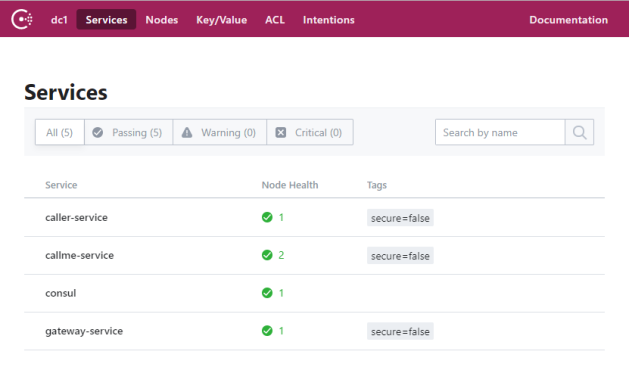Using Spring Cloud Load Balancer In Microservices Communication

Almost a year ago Spring Cloud announced that most of Spring Cloud Netflix OSS projects will be moved to the maintenance mode starting from Spring Cloud GreenwichRelease Train. In fact, the maintenance mode only does not include Eureka, which still will be supported. I referred to that information in one of my previous articles The Future of Spring Cloud Microservices After Netflix Era. I have shared some opinions about the future of microservices with Spring Cloud. Of course, I also included an example of building microservices architecture without Netflix OSS using HashiCorp’s Consul, Spring Cloud Gateway and an early version of Spring Cloud LoadBalancer.
Today, the currently developed version of Spring Cloud Released Train is Hoxton (the next after Greenwich), so I decided to get back on track and update my example of microservices shared in the previous article. It might be slightly surprising, but I could find any working example presenting usage of the new built-in Spring Cloud LoadBalancer on the Internet. Probably the reason is that it is still under active development. I was able to build a working example with an auto-configured load balancer, without any additional part of the source code. Let’s take a look at how to implement load balancing with Spring Cloud.
Release Train
The Release Train version used in this article is Hoxton.M2. To access it we need to use the Spring Milestone repository.
<repositories>
<repository>
<id>spring-milestones</id>
<name>Spring Milestones</name>
<url>https://repo.spring.io/milestone</url>
</repository>
</repositories>
<pluginRepositories>
<pluginRepository>
<id>spring-milestones</id>
<name>Spring Milestones</name>
<url>https://repo.spring.io/milestone</url>
</pluginRepository>
</pluginRepositories>
Here’s declaration of release train inside dependency management section:
<parent>
<groupId>org.springframework.boot</groupId>
<artifactId>spring-boot-starter-parent</artifactId>
<version>2.2.0.RC1</version>
<relativePath/>
</parent>
<properties>
<java.version>1.8</java.version>
<spring-cloud.version>Hoxton.M2</spring-cloud.version>
</properties>
<dependencyManagement>
<dependencies>
<dependency>
<groupId>org.springframework.cloud</groupId>
<artifactId>spring-cloud-dependencies</artifactId>
<version>${spring-cloud.version}</version>
<type>pom</type>
<scope>import</scope>
</dependency>
</dependencies>
</dependencyManagement>
Dependencies
Besides standard Spring Boot Web Starter we need to include starters for Consul discovery and config client, and of course spring-cloud-loadbalancer library. We should remember about excluding Ribbon and Hystrix artifacts from spring-cloud-starter-consul-discovery starter.
<dependency>
<groupId>org.springframework.cloud</groupId>
<artifactId>spring-cloud-starter-consul-discovery</artifactId>
<exclusions>
<exclusion>
<groupId>org.springframework.cloud</groupId>
<artifactId>spring-cloud-netflix-hystrix</artifactId>
</exclusion>
<exclusion>
<groupId>org.springframework.cloud</groupId>
<artifactId>spring-cloud-starter-netflix-ribbon</artifactId>
</exclusion>
</exclusions>
</dependency>
<dependency>
<groupId>org.springframework.cloud</groupId>
<artifactId>spring-cloud-starter-consul-config</artifactId>
</dependency>
<dependency>
<groupId>org.springframework.cloud</groupId>
<artifactId>spring-cloud-loadbalancer</artifactId>
</dependency>
Sample Applications
We have three sample applications. First callme-service exposes some REST endpoints, second caller-service communicates with the first using Consul discovery, RestTemplate and Spring Cloud Loadbalancer, and third gateway-service acts as API gateway in our architecture.

The repository with source code snippets is available on GitHub: https://github.com/piomin/sample-spring-cloud-microservices-future.git. For some configuration details related to Consul discovery please refer to my previous article. In fact we don’t have to provide any additional code to make it working. We just have to declare RestTemplate bean annotated with @LoadBalanced:
@SpringBootApplication
public class CallerApplication {
public static void main(String[] args) {
SpringApplication.run(CallerApplication.class, args);
}
@LoadBalanced
@Bean
RestTemplate template() {
return new RestTemplate();
}
}
Then we may call the target service using its name taken from the discovery server:
@RestController
@RequestMapping("/caller")
public class CallerController {
private static final Logger LOGGER = LoggerFactory.getLogger(CallerController.class);
@Autowired
Environment environment;
@Autowired
RestTemplate template;
@GetMapping
public String call() {
String url = "http://callme-service/callme";
String callmeResponse = template.getForObject(url, String.class);
LOGGER.info("Response: {}", callmeResponse);
return "I'm Caller running on port " + environment.getProperty("local.server.port")
+ " calling-> " + callmeResponse;
}
}
Summary
In this article, I show you a working example of communication between microservices using the new Spring Cloud Load Balancer. I also tried to use that load balancer instead of Spring Cloud Netflix Ribbon inside my application with Spring Cloud Gateway – with no success. According to the newest documentation of Spring Cloud Circuit Breaker built on top of Resilience4J I tried to include circuit breaker in the communication between caller-service and callme-service – also with no success. These new Spring Cloud features are still under active development. I hope to use them successfully in my applications soon. For more advanced Spring Cloud load balancing usage please refer to the article A Deep Dive Into Spring Cloud Load Balancer.
16 COMMENTS